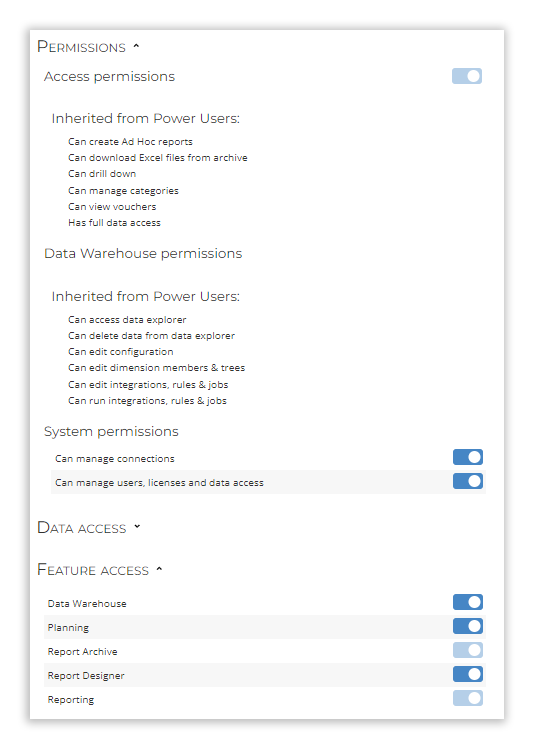Having access to a single, reliable, and accurate view of company data for analysis is a crucial first step in the budgeting and forecasting process.
Interactive visualisations of historical and actual data provides contributors with the insight they need to understand business performance, identify areas for growth, and be better prepared for potential risks.
However, the first step of preparing the data—the integration process—can be complex, time-consuming, and error prone. It is a repetitive task, performed weekly, monthly, or whenever the latest data refresh is required.
This integration tax is often the reason why organisations don’t forecast as often as they would like to.
In this blog we highlight the most common challenges of integrating data, how to overcome them, and how technology can help automate this critical process.
The challenges of manual data integration
When organisations lack the technology to automate data integration, they often use spreadsheets. However, utilising spreadsheets poses several challenges:
- Inconsistent data quality: Data in different systems has different formats and structures. Manually transforming the data in spreadsheets to make it consistent across the different sources can be time consuming and error prone, and may lead to inaccurate and incomplete data.
- Limited scalability: Scalability is a concern when using spreadsheets for data integration. Spreadsheets may hit their row limits, and by the time you reach the limit you are already working with a volume of data that is difficult to manage in a spreadsheet. You may experience long processing times because the technology is not optimised to handle the volume of data.
- Heightened security risk: When using spreadsheets to combine data, the data is typically exported from other systems via CSV or XLS file exports and then transformed for reporting purposes. Extracting data from the source system can undermine the security measures, increasing the risk of exposing or compromising sensitive data.
The benefits of automating data integration
For the purpose of this blog, we will be discussing the benefits of automating data integration with Solver Corporate Performance Management (CPM) software.
Solver offers a complete CPM solution encompassing reporting, planning, and analytics capabilities, all underpinned by a robust data warehouse utilising Microsoft Azure technology.
- Enhanced data quality: Solver’s data warehouse integrates key data from transactional systems, on-premises or cloud-based, into a single database.
A step in setting up the automation of data integration is the configuration of transformation rules.
Consider the manual steps involved in data cleansing using spreadsheets: formatting date and numerical columns, applying formulae for calculations, aggregations, currency conversions, and more. It can be very complex.
When automating the data integration, these steps are set up once as part of the ETL (extract, transform, load) process. The automation of this step delivers significant time savings, and it is also the step that delivers huge improvements to the quality of data. It ensures consistency in data that may vary depending on the source system. It reduces the chances of errors that can easily occur when manually transforming volumes of data in spreadsheets. - Robust scalability: The Solver data warehouse is optimised for handling large volumes of data. If you are using spreadsheets to manually combine data for the reporting and budgeting process, you may be experiencing performance issues such as reaching spreadsheet limits, files taking too long to load, and an overall deterioration in performance.
A reporting data warehouse is built with scalability in mind. It stores the data in a structured way and optimises data queries by aggregating and indexing data so reports are generated much quicker.
Organisations that have implemented Solver are empowering more people to access and use their data. They have the capabilities to bring in data from new sources as needed, scaling the volume of data and sources used in their reporting, budgeting, and forecasting process. The built-in technology helps them scale capabilities without sacrificing performance. - Improved security: One important advantage that organisations gain from moving their data integration process from being spreadsheet based to using a data warehouse is security.
Solver’s data warehouse is powered by Microsoft SQL Azure platform, and so it has the built-in technology to support multiple user authentication methods.
In addition, administrators can manage more granular access permissions from within Solver’s data warehouse permissions. The image below shows some of the user permissions available within Solver, which can be set up to manage access to data.

Solver Permissions
Next steps
Depending on the size and volume of data you are managing in your organisation, it may be time to rethink the processes you have in place.
As discussed, there are many advantages to be gained from automating the data integration process for reporting, budgeting, and forecasting. Quality of data, scalability, and security are only some of these advantages.
If you are interested in learning more, we invite you to schedule time with one of our consultants to explore the possibility of implementing automated data integration tools for your business and the benefits it can bring to your team.
Complete the contact us form on this page and a member of our team will get in touch to schedule a date and time to discuss your needs.






